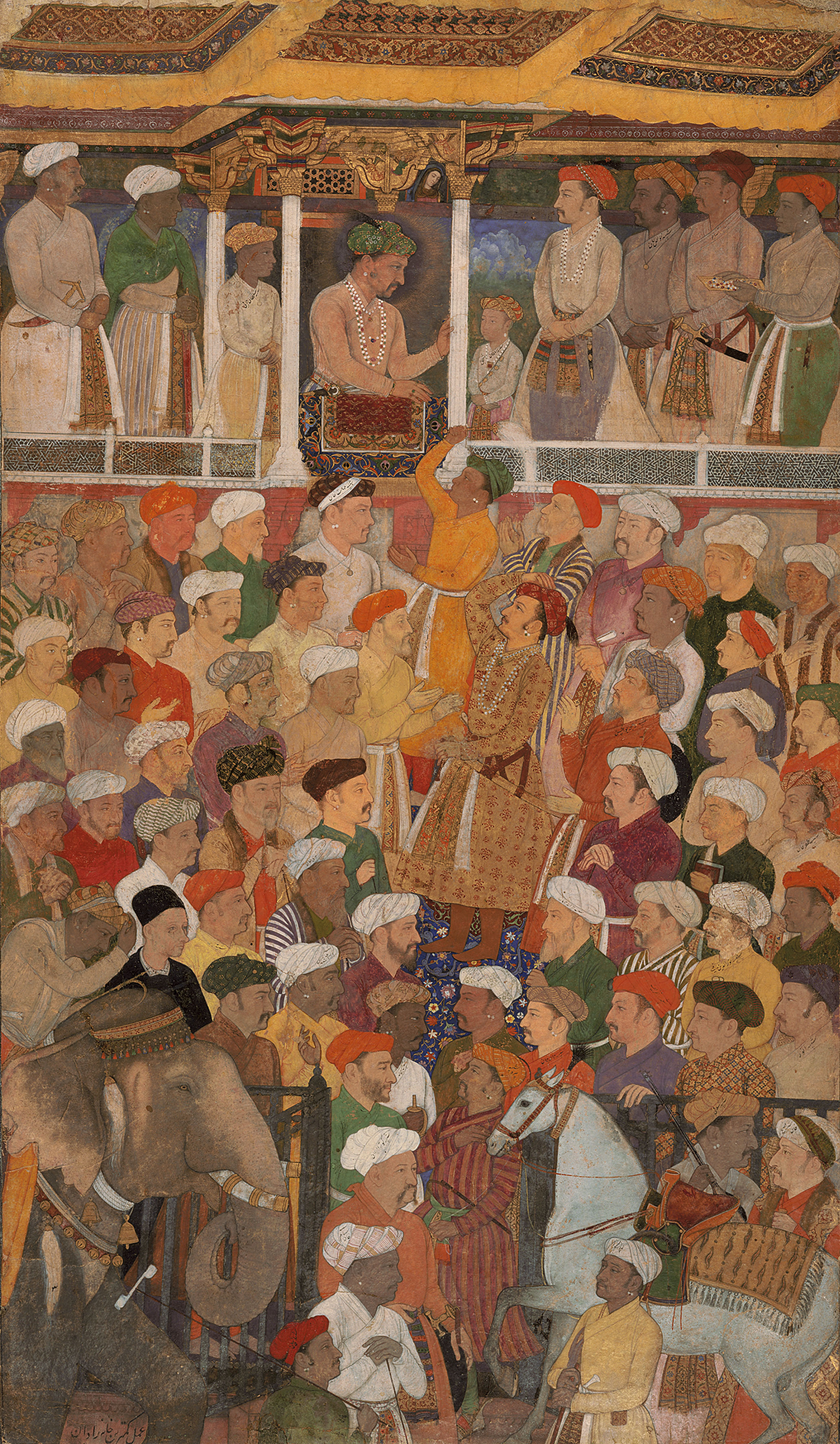|
Wheeler Thackston
Wheeler McIntosh Thackston (born 1944) is an American Orientalist. He has edited and translated numerous Chaghatai, Arabic, and Persian literary and historical works. Life Thackston is a graduate of Princeton's Oriental Studies department, where he was a member of Princeton's Colonial Club, and Harvard's Near Eastern Studies department (Ph.D., 1974), where he was Professor of the Practice of Persian and other Near Eastern Languages from 1972. He studied at Princeton under Martin Dickson and at Harvard with Annemarie Schimmel. Thackston retired from teaching at Harvard in 2007. His best-known works are Persian and Classical and Qur'anic Arabic grammars and his translations of the '' Babur-nama'', the memoirs of the Mughal prince and emperor Babur, The Gulistan of Saadi, and the memoirs of Emperor Jahangir, or the ''Jahangir-nama''. He has also produced important manuals or editions of texts in Levantine Arabic, Ottoman Turkish, Syriac, Uzbek, Luri, and Kurdish. He has ... [...More Info...] [...Related Items...] OR: [Wikipedia] [Google] [Baidu] |
Mughal Empire
The Mughal Empire was an early-modern empire that controlled much of South Asia between the 16th and 19th centuries. Quote: "Although the first two Timurid emperors and many of their noblemen were recent migrants to the subcontinent, the dynasty and the empire itself became indisputably Indian. The interests and futures of all concerned were in India, not in ancestral homelands in the Middle East or Central Asia. Furthermore, the Mughal empire emerged from the Indian historical experience. It was the end product of a millennium of Muslim conquest, colonization, and state-building in the Indian subcontinent." For some two hundred years, the empire stretched from the outer fringes of the Indus river basin in the west, northern Afghanistan in the northwest, and Kashmir in the north, to the highlands of present-day Assam and Bangladesh in the east, and the uplands of the Deccan Plateau in South India. Quote: "The realm so defined and governed was a vast territory of some , rang ... [...More Info...] [...Related Items...] OR: [Wikipedia] [Google] [Baidu] |
Sindhi Language
Sindhi ( ; , ) is an Indo-Aryan language spoken by about 30 million people in the Pakistani province of Sindh, where it has official status. It is also spoken by a further 1.7 million people in India, where it is a Scheduled languages of India, scheduled language, without any state-level official status. The main writing system is the Perso-Arabic script, which accounts for the majority of the Sindhi literature and is the only one currently used in Pakistan. In India, both the Perso-Arabic script and Devanagari are used. Sindhi has an attested history from the 10th century CE. Sindhi was one of the first languages of South Asia to encounter influence from Persian language, Persian and Arabic following the Umayyad campaigns in India, Umayyad conquest in 712 CE. A substantial body of Sindhi literature developed during the Medieval period, the most famous of which is the religious and mystic poetry of Shah Abdul Latif Bhittai from the 18th century. Modern Sindhi was promoted under ... [...More Info...] [...Related Items...] OR: [Wikipedia] [Google] [Baidu] |
Kurdish Language
Kurdish (, ) is a language or a group of languages spoken by Kurds in the geo-cultural region of Kurdistan and the Kurdish diaspora. Kurdish constitutes a dialect continuum, belonging to Western Iranian languages in the Indo-European language family. The main three dialects or languages of Kurdish are Northern Kurdish (), Central Kurdish (), and Southern Kurdish (). A separate group of non-Kurdish Northwestern Iranian languages, the Zaza–Gorani languages, are also spoken by several million ethnic Kurds.Kaya, Mehmet. The Zaza Kurds of Turkey: A Middle Eastern Minority in a Globalised Society. The majority of the Kurds speak Kurmanji, and most Kurdish texts are written in Kurmanji and Sorani. Kurmanji is written in the Hawar alphabet, a derivation of the Latin script, and Sorani is written in the Sorani alphabet, a derivation of Arabic script. The classification of Laki as a dialect of Southern Kurdish or as a fourth language under Kurdish is a matter of debate, but the diff ... [...More Info...] [...Related Items...] OR: [Wikipedia] [Google] [Baidu] |
Luri Language
Luri ( lrc, لٛۏری, Łôrī, luz, لُرِی, Lorī) is a Southwestern Iranian language continuum spoken by the Lur people, an Iranian people native to Western Asia. The Luri dialects are descended from Middle Persian and are Central Luri, Bakhtiari,G. R. Fazel, 'Lur', in Muslim Peoples: A World Ethnographic Survey, ed. R. V. Weekes (Westport, 1984), pp. 446–447 and Southern Luri. This language is spoken mainly by the Bakhtiari and Southern Lurs ( Kohgiluyeh and Boyer-Ahmad, Mamasani, Sepidan, Bandar Ganaveh, Bandar Deylam) in Iran. History Luri is the closest living language to Archaic and Middle Persian. The language descends from Middle Persian (Parsig). It belongs to the ''Persid'' or ''Southern Zagros group'', and is lexically similar to modern Persian, differing mainly in phonology. According to the ''Encyclopædia Iranica'', "All Lori dialects closely resemble standard Persian and probably developed from a stage of Persian similar to that represented in Earl ... [...More Info...] [...Related Items...] OR: [Wikipedia] [Google] [Baidu] |
Uzbek Language
Uzbek (''Oʻzbekcha, Oʻzbek tili or Ўзбекча, Ўзбек тили''), formerly known as ''Turki'' or ''Western Turki'', is a Turkic language spoken by Uzbeks. It is the official, and national language of Uzbekistan. Uzbek is spoken as either native or second language by 44 million people around the world (L1+L2), having some 34 million speakers in Uzbekistan, 4.5 million in Afghanistan, and around 5 million in the rest of Central Asia, making it the second-most widely spoken Turkic language after Turkish. Uzbek belongs to the Eastern Turkic or Karluk branch of the Turkic language family. External influences include Arabic, Persian and Russian. One of the most noticeable distinctions of Uzbek from other Turkic languages is the rounding of the vowel to , a feature that was influenced by Persian. Unlike other Turkic languages, vowel harmony is nigh-completely lost in modern Standard Uzbek, though it is (albeit somewhat less strictly) still observed in its dialects, as wel ... [...More Info...] [...Related Items...] OR: [Wikipedia] [Google] [Baidu] |
Syriac Language
The Syriac language (; syc, / '), also known as Syriac Aramaic (''Syrian Aramaic'', ''Syro-Aramaic'') and Classical Syriac ܠܫܢܐ ܥܬܝܩܐ (in its literary and liturgical form), is an Aramaic language, Aramaic dialect that emerged during the first century AD from a local Aramaic dialect that was spoken by Arameans in the ancient Aramean kingdom of Osroene, centered in the city of Edessa. During the Early Christian period, it became the main literary language of various Aramaic-speaking Christian communities in the historical region of Syria (region), Ancient Syria and throughout the Near East. As a liturgical language of Syriac Christianity, it gained a prominent role among Eastern Christian communities that used both Eastern Syriac Rite, Eastern Syriac and Western Syriac Rite, Western Syriac rites. Following the spread of Syriac Christianity, it also became a liturgical language of eastern Christian communities as far as India (East Syriac ecclesiastical province), India ... [...More Info...] [...Related Items...] OR: [Wikipedia] [Google] [Baidu] |
Ottoman Turkish Language
Ottoman Turkish ( ota, لِسانِ عُثمانى, Lisân-ı Osmânî, ; tr, Osmanlı Türkçesi) was the standardized register of the Turkish language used by the citizens of the Ottoman Empire (14th to 20th centuries CE). It borrowed extensively, in all aspects, from Arabic and Persian, and its speakers used the Ottoman Turkish alphabet for written communication. During the peak of Ottoman power (), words of foreign origin in Turkish literature in the Ottoman Empire heavily outnumbered native Turkish words, with Arabic and Persian vocabulary accounting for up to 88% of the Ottoman vocabulary in some texts.''Persian Historiography & Geography''Pustaka Nasional Pte Ltd p 69 Consequently, Ottoman Turkish was largely unintelligible to the less-educated lower-class and to rural Turks, who continued to use ("raw/vulgar Turkish"; compare Vulgar Latin and Demotic Greek), which used far fewer foreign loanwords and is the basis of the modern standard. The Tanzimât era (1839–187 ... [...More Info...] [...Related Items...] OR: [Wikipedia] [Google] [Baidu] |
Levantine Arabic
Levantine Arabic, also called Shami (autonym: or ), is a group of mutually intelligible vernacular Arabic varieties spoken in the Levant, in Syria, Jordan, Lebanon, Palestine, Israel, and Turkey (historically in Adana, Mersin and Hatay only). With over 44 million speakers, Levantine is, alongside Egyptian, one of the two prestige varieties of spoken Arabic comprehensible all over the Arab world. Levantine is not officially recognized in any state or territory. Although it is the majority language in Jordan, Lebanon, Palestine, and Syria, it is predominantly used as a spoken vernacular in daily communication, whereas most written and official documents and media in these countries use the official Modern Standard Arabic (MSA), a form of literary Arabic only acquired through formal education that does not function as a native language. In Israel and Turkey, Levantine is a minority language. The Palestinian dialect is the closest vernacular Arabic variety to MSA, with a ... [...More Info...] [...Related Items...] OR: [Wikipedia] [Google] [Baidu] |
Jahangir-nama
''Tuzuk-e-Jahangiri'' or ''Tuzuk-i-Jahangiri'' ( fa, ) or Jahangir-nama ( fa, ) is the autobiography of Mughal Emperor Jahangir (1569–1627). Also referred to as ''Jahangirnama'', the ''Tuzk-e-Jahangiri'' is written in Persian, and follows the tradition of his great-grandfather, Babur (1487–1530), who had written the ''Baburnama''; though Jahangir went a step further and besides writing on the history of his reign, he included details such as his reflections on art, politics, and information about his family. He wrote the memoirs in stages through most of his life until 1622. His own manuscript was magnificently illustrated by his studio of painters, but the illustrations were very early dispersed, many being found in ''muraqqa'' (albums) compiled by his sons. Several are in the British Library. Overview The text details the first 19 years of his reign (from 1605–1623), but he gave up the writing of his memoirs in 1621. The complete ''Tuzuk-e-Jahangiri'' written by Jahang ... [...More Info...] [...Related Items...] OR: [Wikipedia] [Google] [Baidu] |
Jahangir
Nur-ud-Din Muhammad Salim (30 August 1569 – 28 October 1627), known by his imperial name Jahangir (; ), was the fourth Mughal Emperor, who ruled from 1605 until he died in 1627. He was named after the Indian Sufi saint, Salim Chishti. Early life Prince Salim was the third son born to Akbar and his favourite Queen Consort, Mariam-uz-Zamani in Fatehpur Sikri on 30 August 1569. He had two elder brothers, Hassan Mirza and Hussain Mirza, born as twins to his parents in 1564, both of whom died in infancy. Since these children had died in infancy, Akbar sought the blessing of holy men for an heir-apparent to his empire. When Akbar was informed of the news that his chief Hindu wife was expecting a child, an order was passed for the establishment of a royal palace in Sikri near the lodgings of Shaikh Salim Chisti, where the Empress could enjoy the repose being in the vicinity of the revered saint. Mariam was shifted to the palace established there and during her pregnancy, Akba ... [...More Info...] [...Related Items...] OR: [Wikipedia] [Google] [Baidu] |









